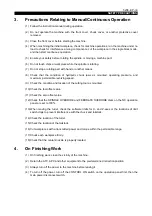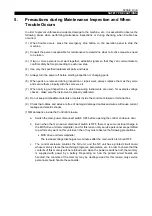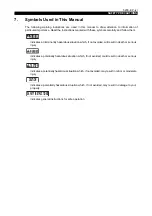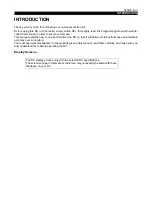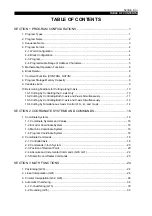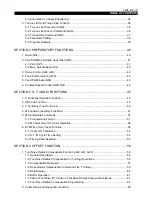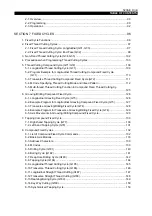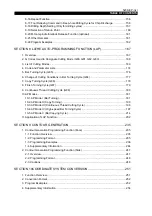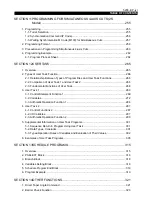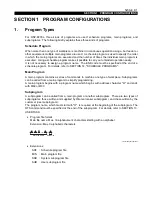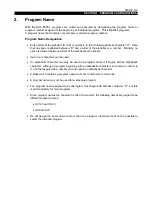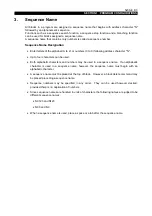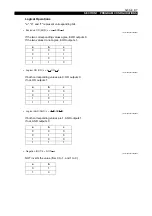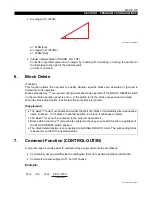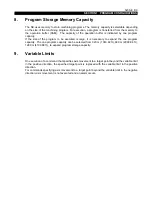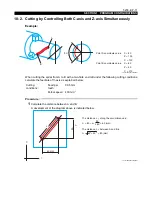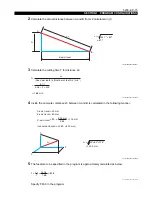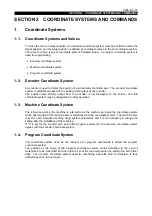
5238-E P-1
SECTION 1 PROGRAM CONFIGURATIONS
SECTION 1 PROGRAM CONFIGURATIONS
1.
Program Types
For OSP-P200L, three kinds of programs are used: schedule programs, main programs, and
subprograms. The following briefly explains these three kinds of programs.
Schedule Program
When more than one type of workpiece is machined in continuous operation using a bar feeder or
other equipment, multiple main programs are used. A schedule program is used to specify the order
in which the main programs are executed and the number of times the individual main program is
executed. Using a schedule program makes it possible to carry out untended operation easily.
It is not necessary to assign a program name. The END code must be specified at the end of a
schedule program. For details, refer to SECTION 14, "SCHEDULE PROGRAMS".
Main Program
A main program contains a series of commands to machine one type of workpiece. Subprograms
can be called from a main program to simplify programming.
A main program begins with a program name which begins with address character "O" and ends
with M02 or M30.
Subprogram
A subprogram can be called from a main program or another subprogram. There are two types of
subprograms: those written and supplied by Okuma (maker subprogram), and those written by the
customer (user subprogram).
The program name, which must start with "O", is required at the beginning of the subprogram. The
RTS command must be specified at the end of the subprogram. For details, refer to SECTION 13,
USER TASK.
•
Program file format
Main file name: Max. 16 alphanumeric characters starting with an alphabet
Extension: Max. 3 alphabetic characters
LE33013R0300300010001
•
Extensions
SDF : Schedule program file
MIN : Main program file
SSB : System subprogram file
SUB : User subprogram file
•••
.
Extension
Main file name



